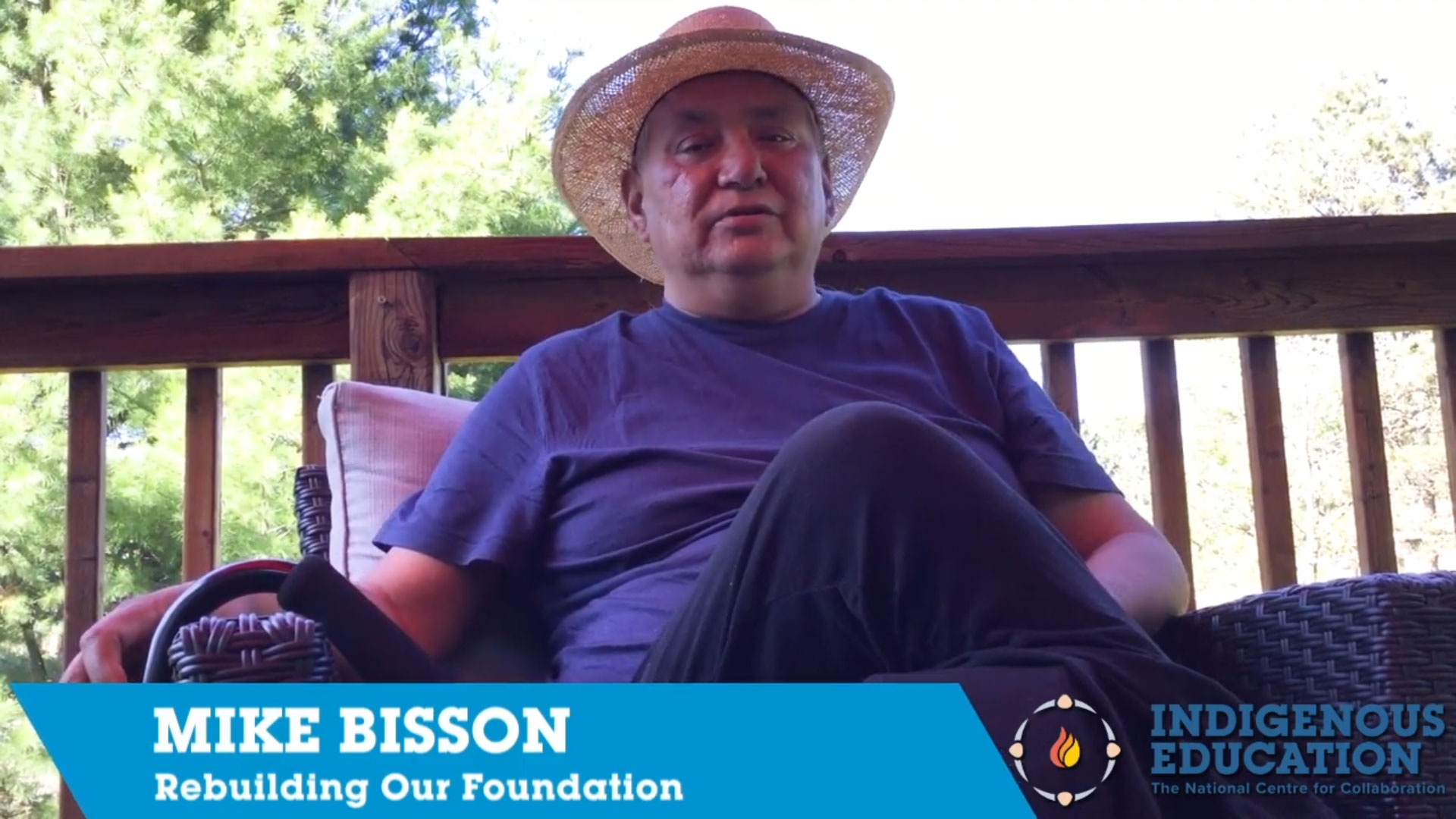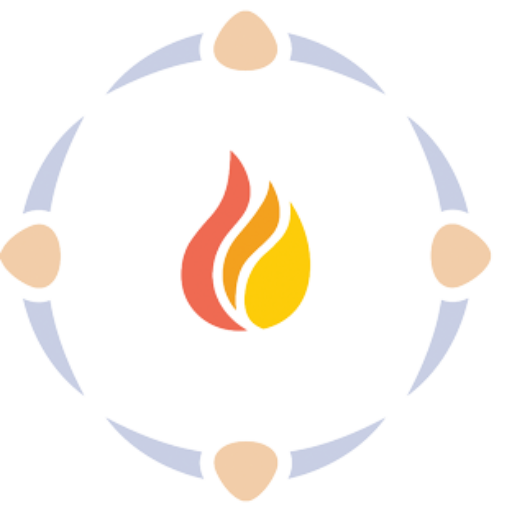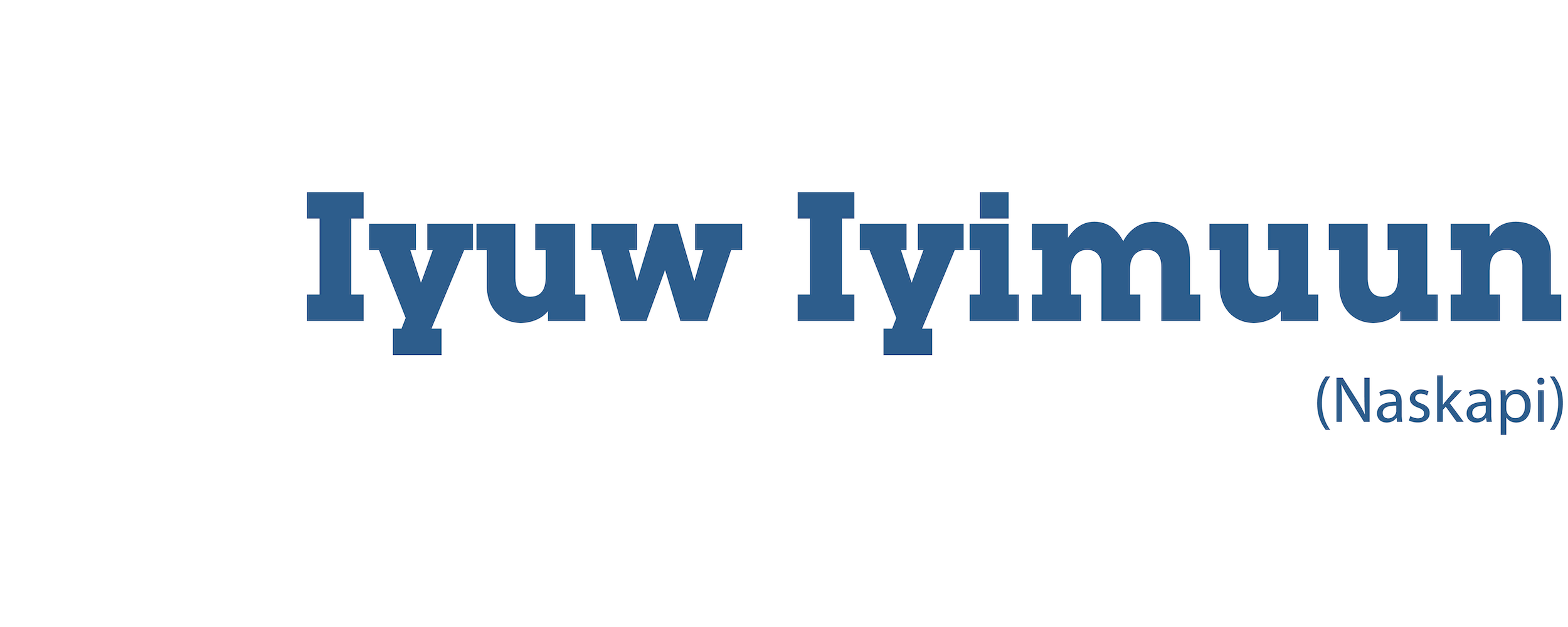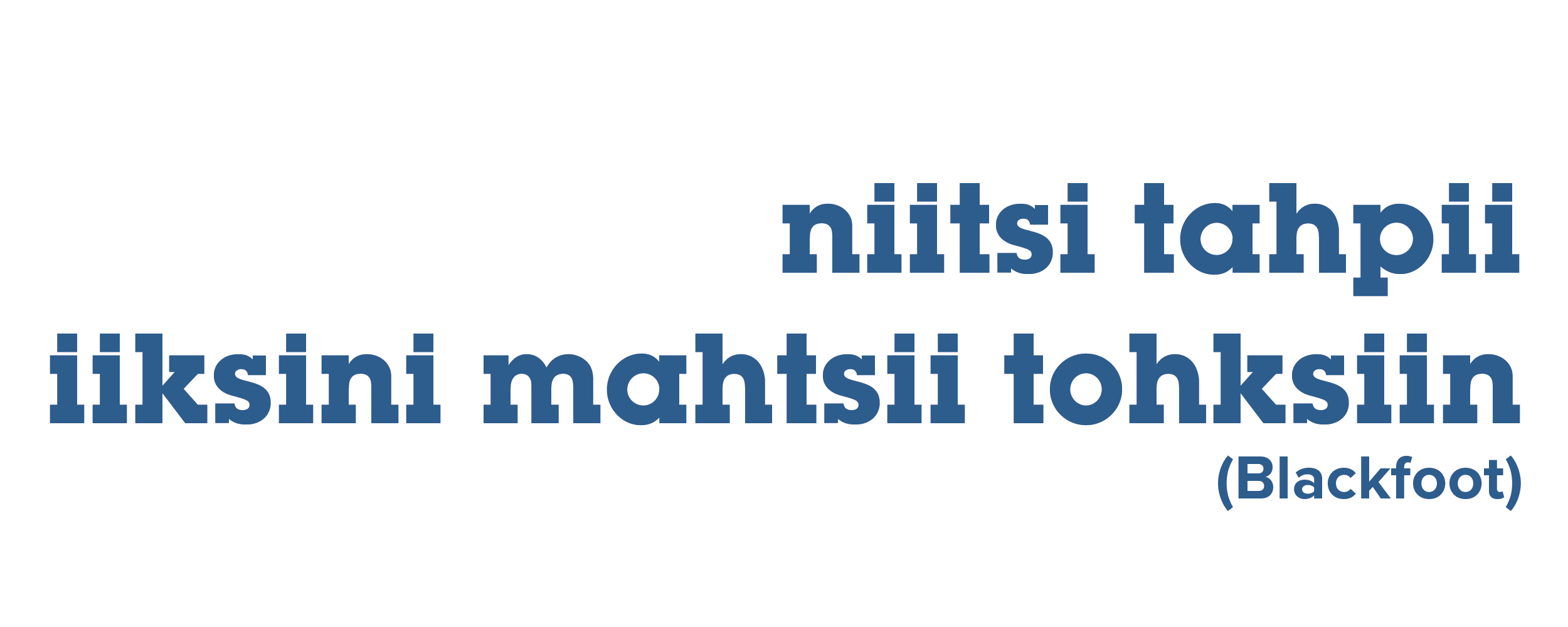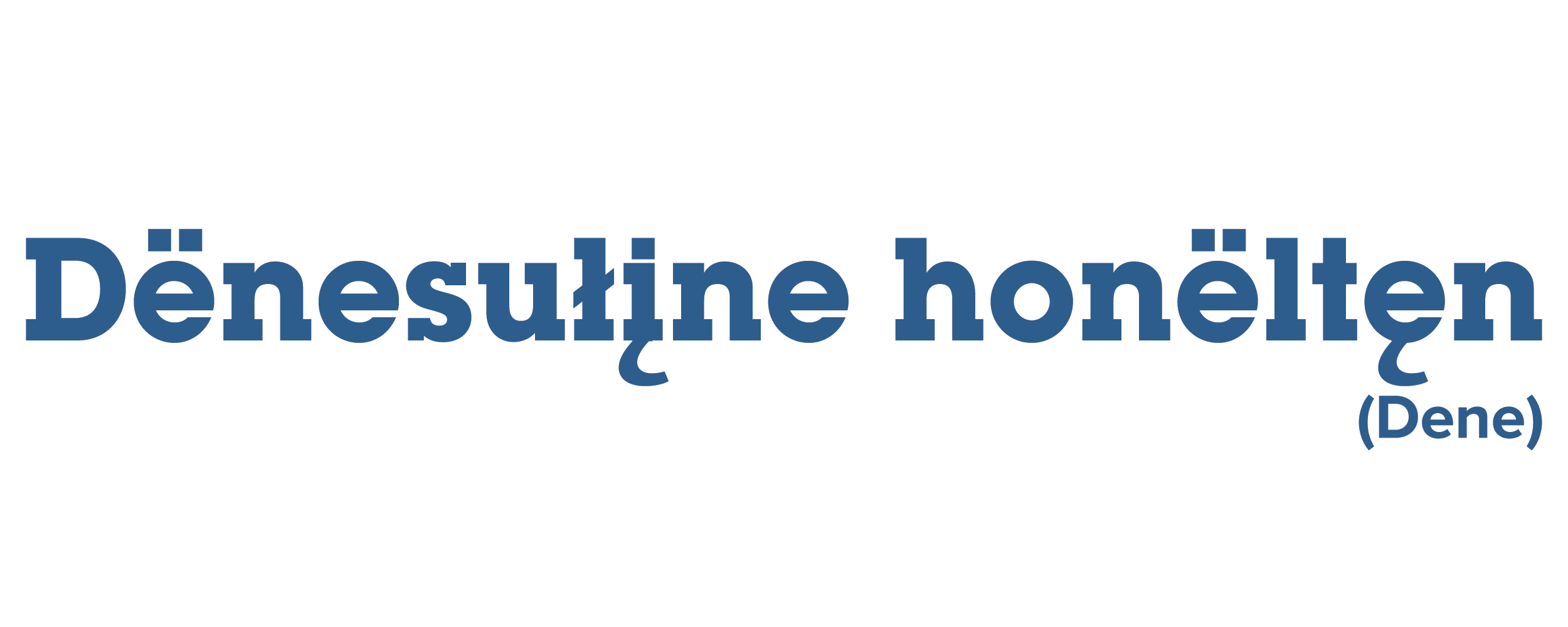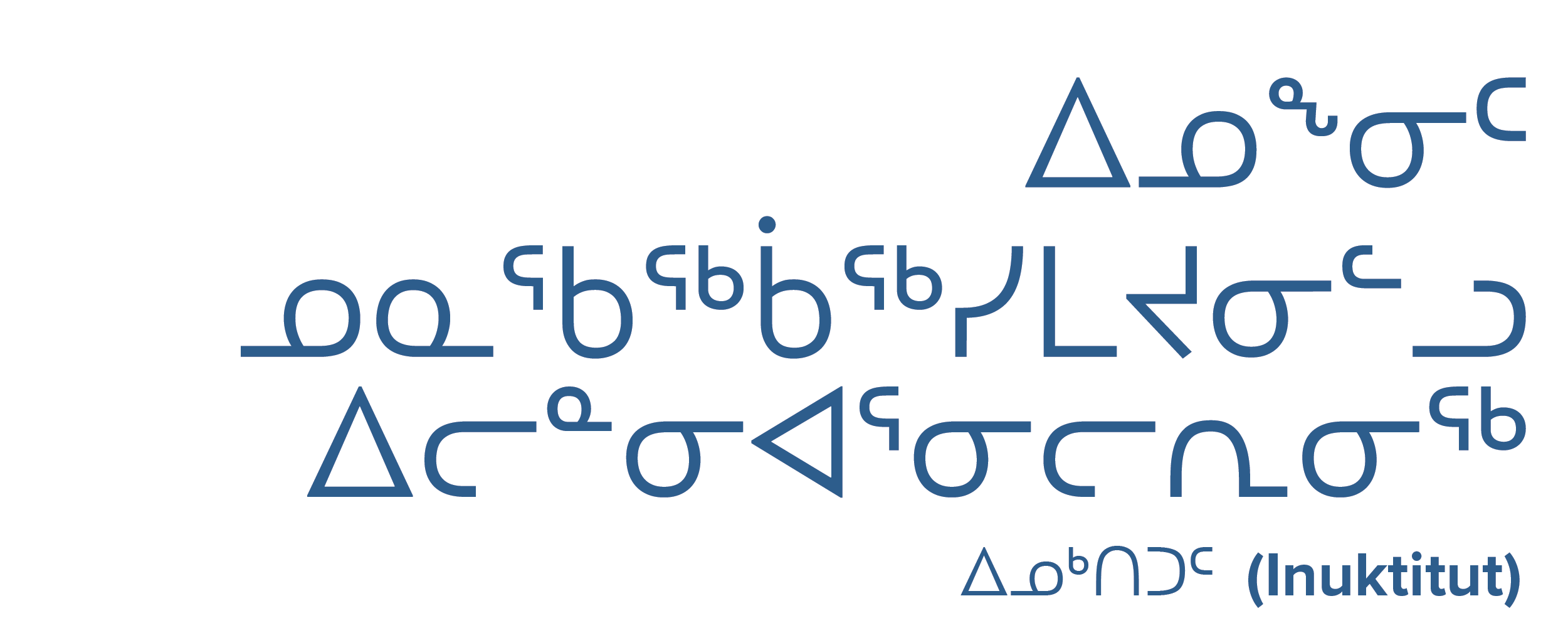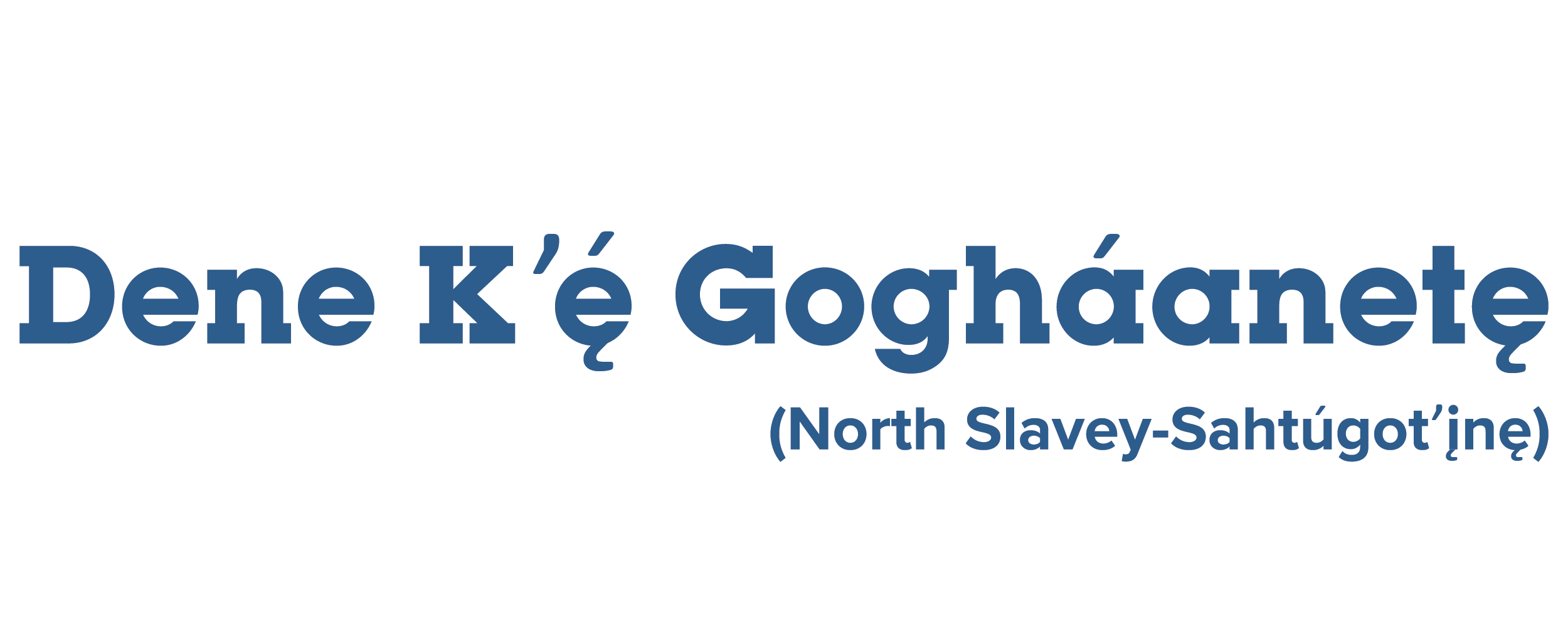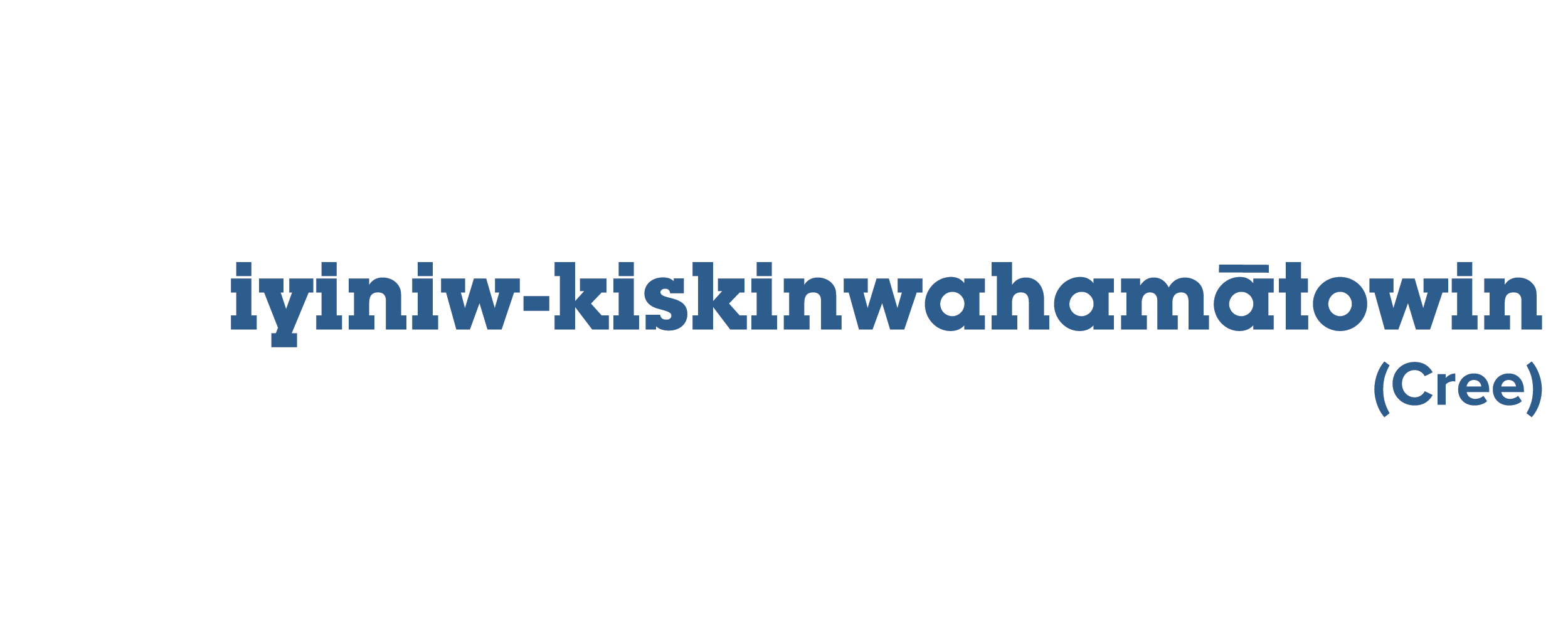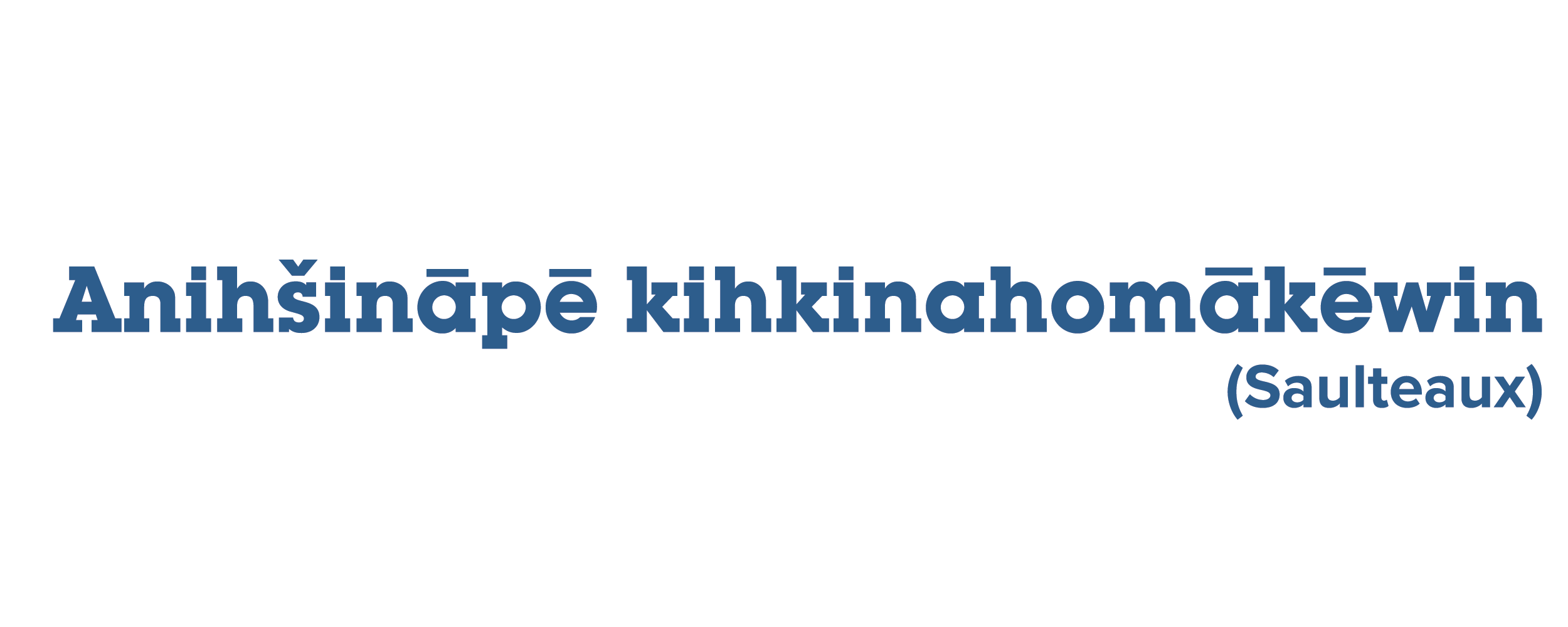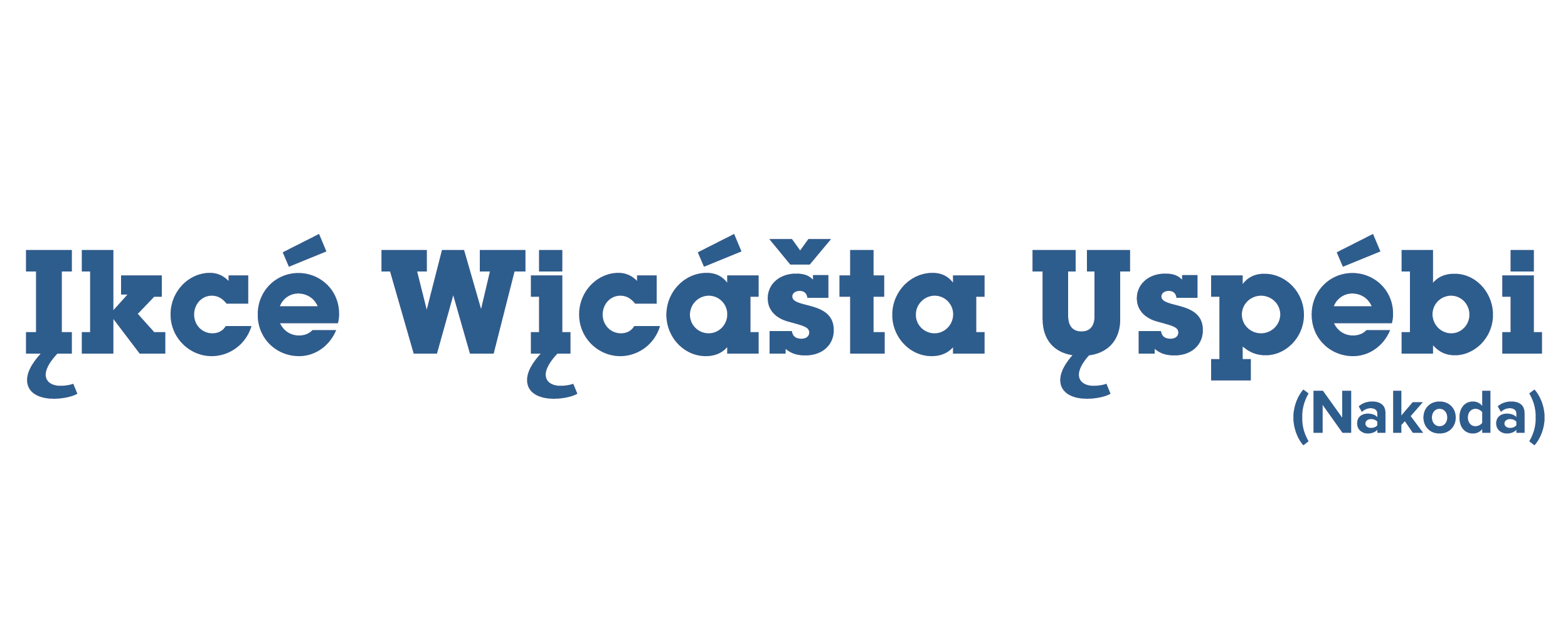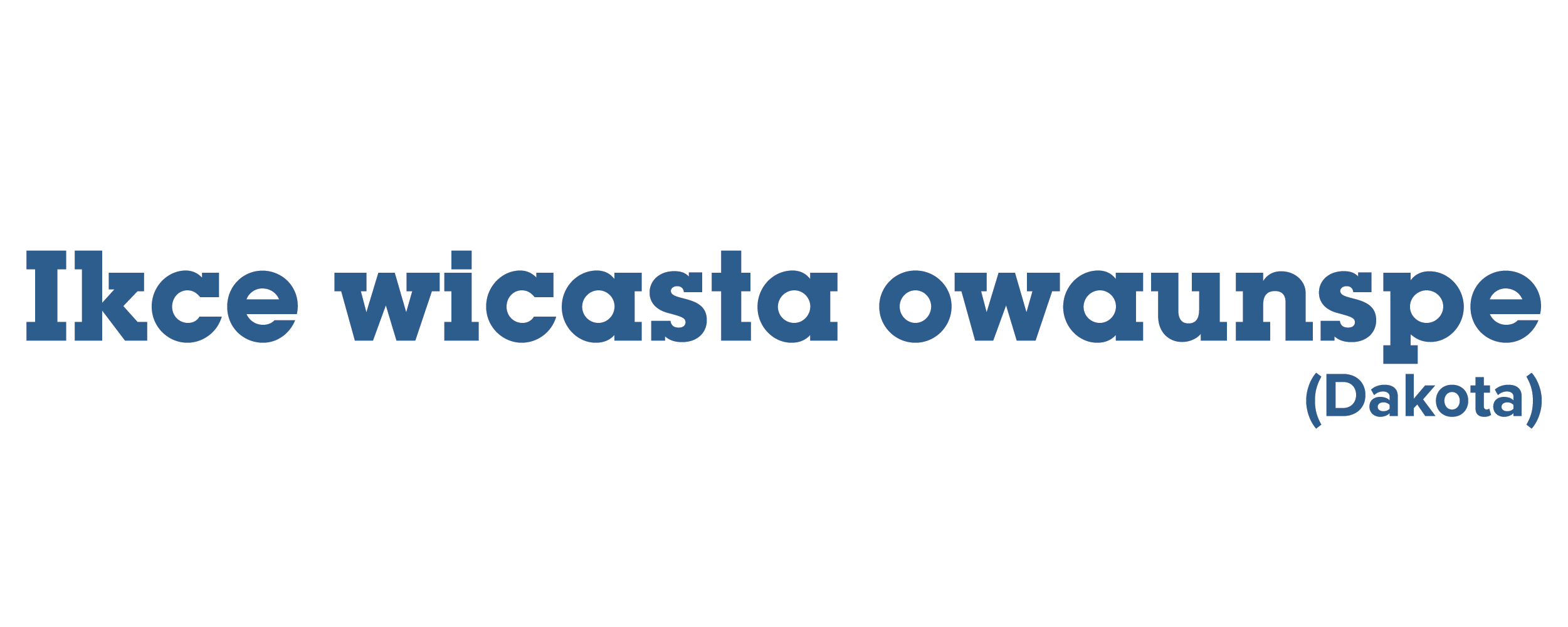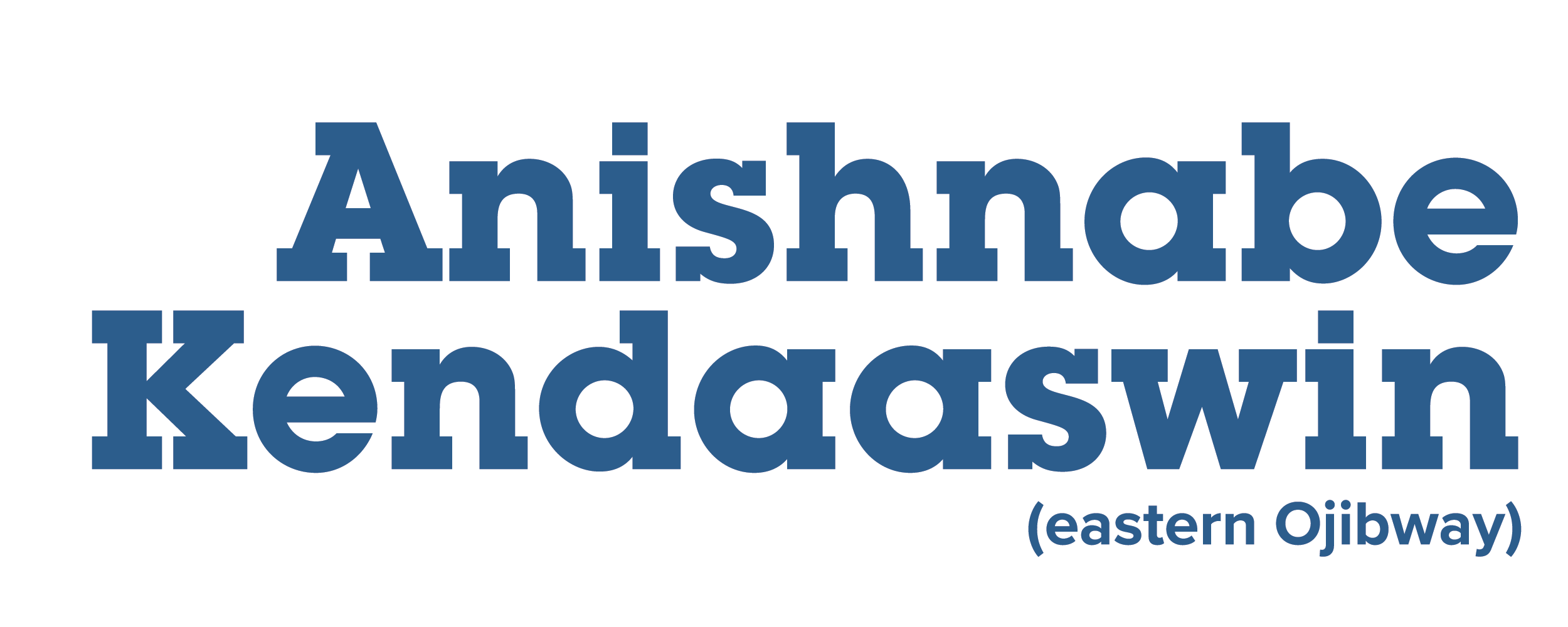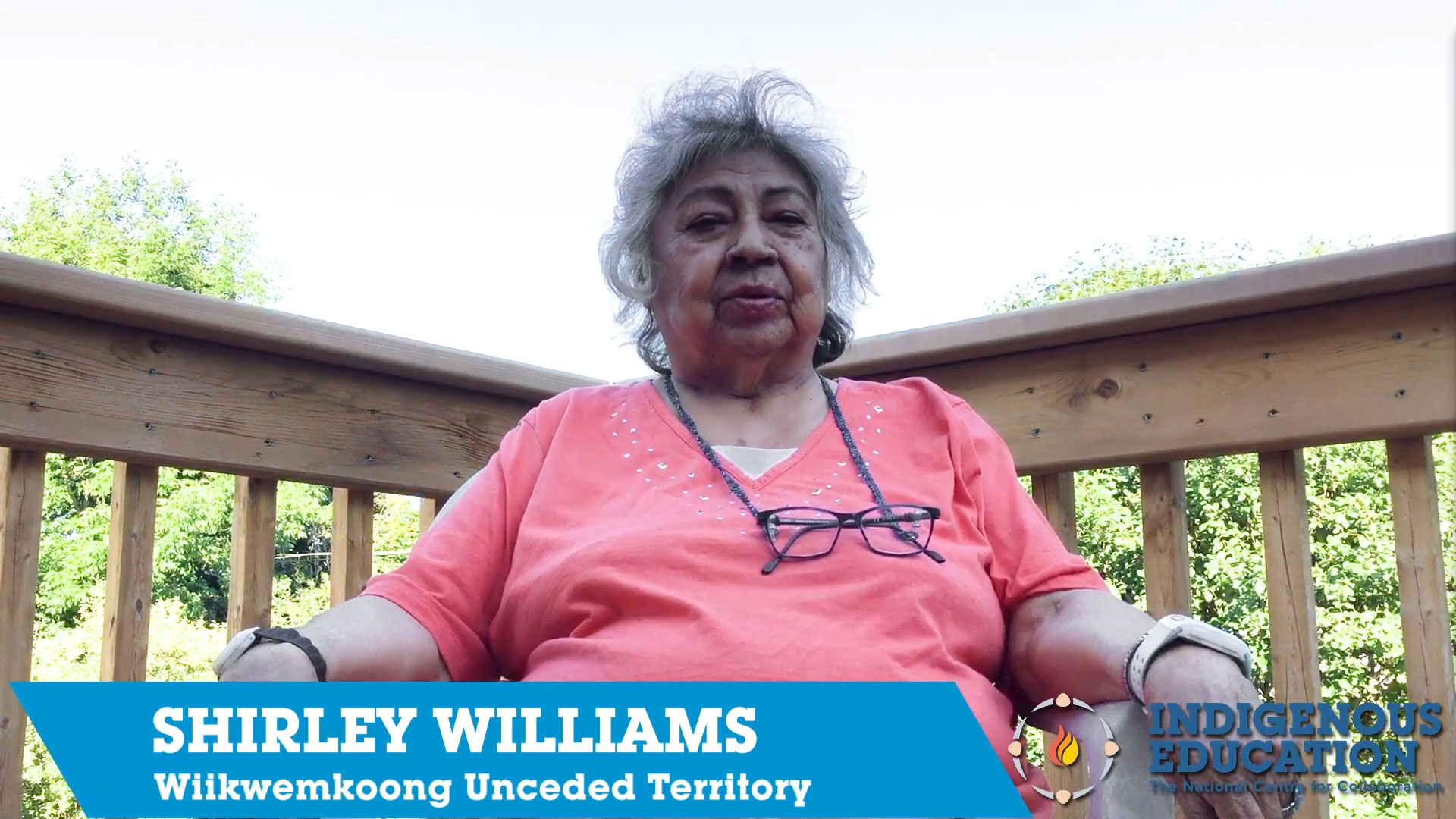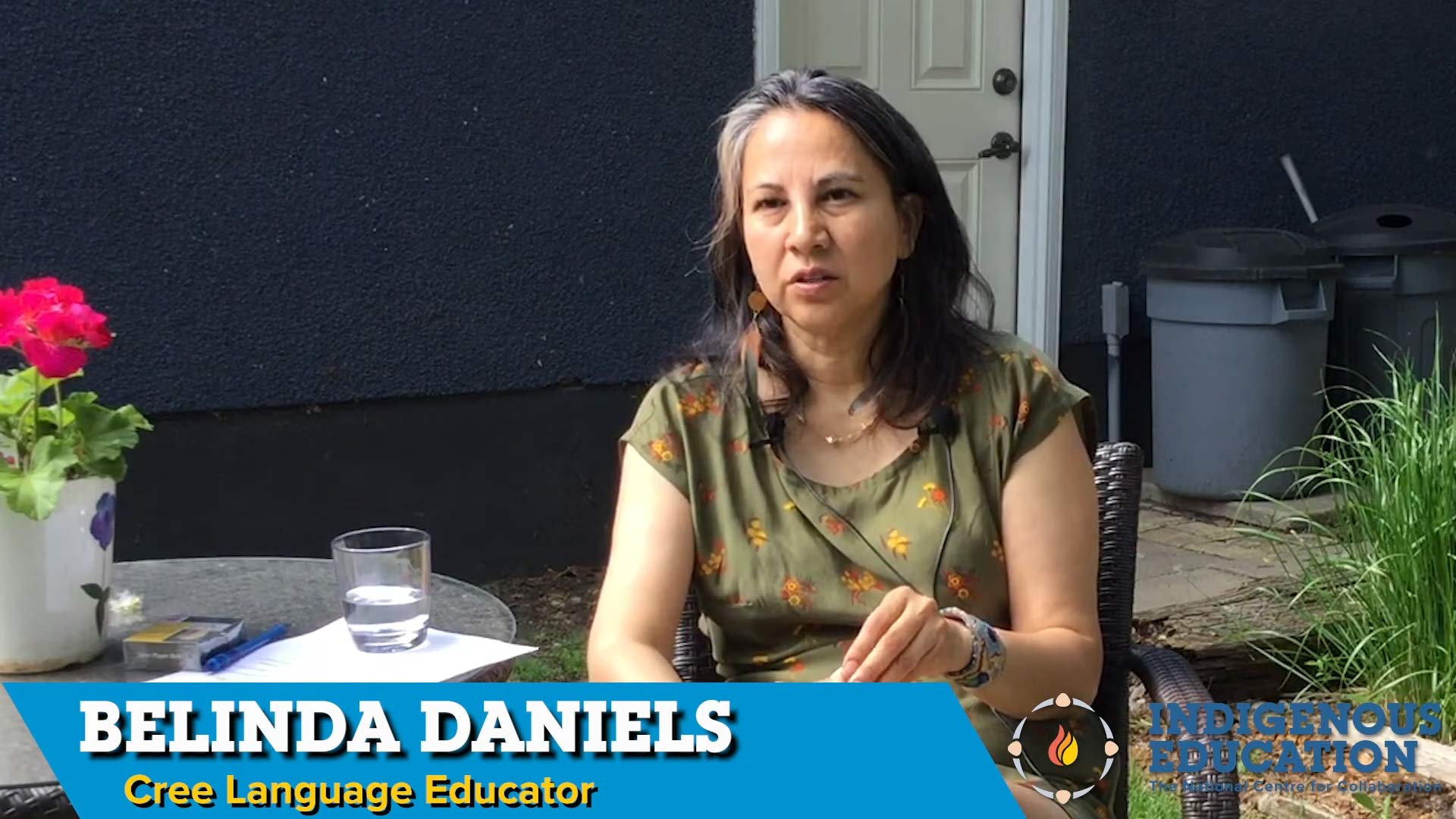Posted on by Kevin Fitzmaurice
Barbara Nolan is an Elder from Wiikwemkoong First Nation. She is the Language Commissioner for the Anishinabek Nation and has a long history of teaching the Anishnaabe language and has developed many different resources to help with the teaching and learning of Anishnaabemowin including the ‘Nishnaabemdaa’, an Anishinaabemowin language app available for iOS and Android […]
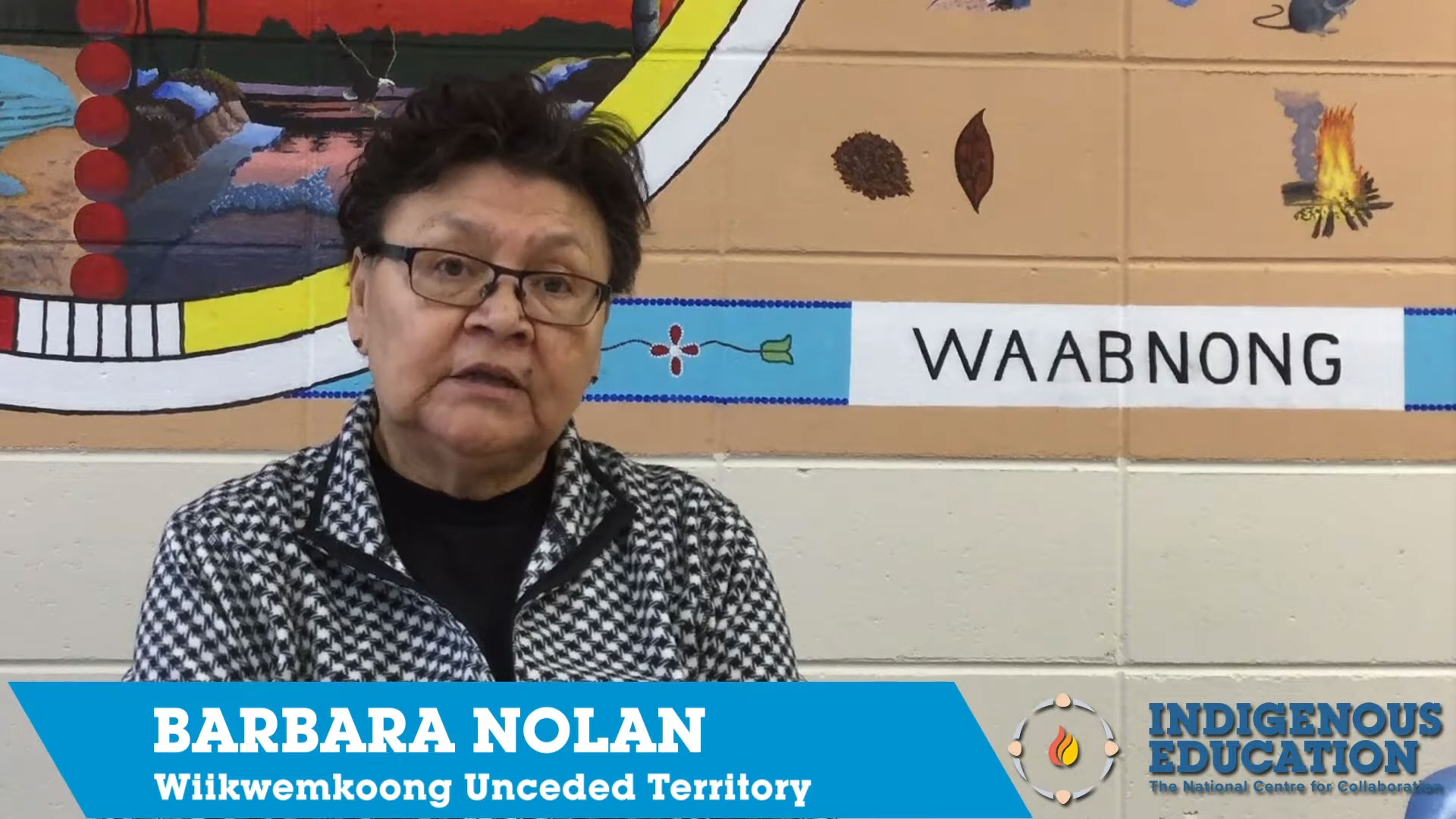
Barbara Nolan is an Elder from Wiikwemkoong First Nation. She is the Language Commissioner for the Anishinabek Nation and has a long history of teaching the Anishnaabe language and has developed many different resources to help with the teaching and learning of Anishnaabemowin including the ‘Nishnaabemdaa’, an Anishinaabemowin language app available for iOS and Android devices. Barbara also teaches Anishinaabemowin immersion on a part-time basis at the Garden River Child Care Centre.
According to Elder Barbara Nolan, traditional Anishnaabe education was on the land and children were included in everything that the parents did from picking berries, to cleaning fish and it was all done in the language. All these teachings can be included in today’s curriculum as part of land-based learning that is immersed in the language. This is Indigenous education and this is how our spirits get filled up.
Posted on by Kevin Fitzmaurice
Chris Pheasant is from Wiikwemkoong First Nation and has dedicated his life to Indigenous Education. Over the course of his career, Chris has been a Guidance Counsellor, Teacher, Principal, and College Faculty member. Indigenous education is Biimaadiziwin, a way of living. Indigenous knowledge is ingrained in the language of the people and its relationship with […]
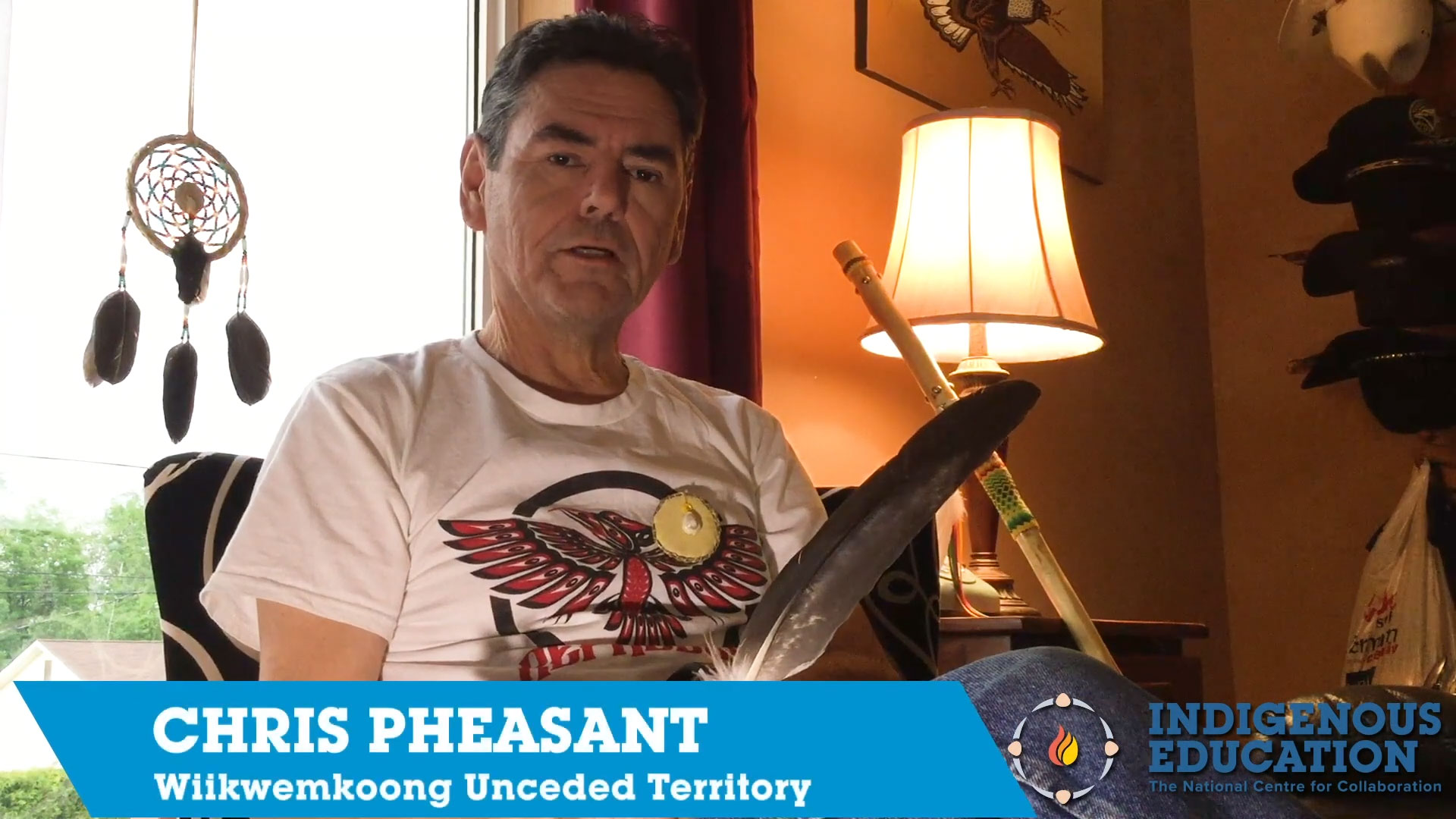
Chris Pheasant is from Wiikwemkoong First Nation and has dedicated his life to Indigenous Education. Over the course of his career, Chris has been a Guidance Counsellor, Teacher, Principal, and College Faculty member. Indigenous education is Biimaadiziwin, a way of living. Indigenous knowledge is ingrained in the language of the people and its relationship with the environment, the land, the water, the air, our spirit. It is a wholistic education that encompasses the four quadrants of being and understandings of natural law. In these and other ways Indigenous Education differs from Western Education and it is important to be aware of and to be respectful of these differences.
Posted on March 30, 2021 by Steffany Salloum
Elder Willie Ermine from Sturgeon Lake First Nation shares about the process of community development and how possibilities like Harvest Days come to fruition in his community.
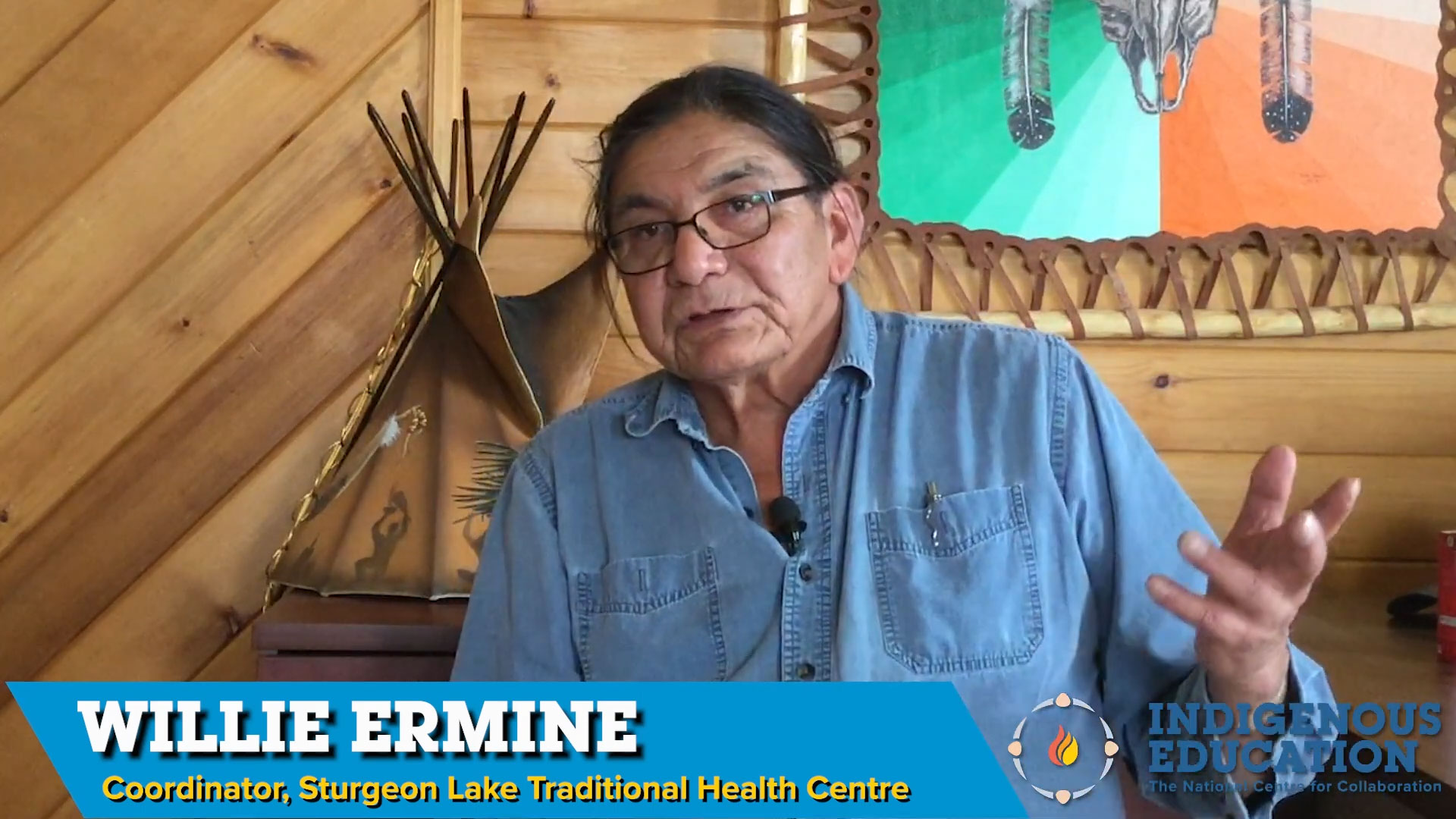
Elder and ceremonialist, Willie Ermine, from Sturgeon Lake First Nation is the Traditional Health Coordinator at the Lloyd Johnson Memorial Healing Lodge. It is through the Elder’s Council and the work of the Healing Lodge that brings Sturgeon Lake community members together. Ermine discusses the history of his community and shares about the uniqueness of community members. The people are special and it is with the gifts of the people that will determine what is possible. By extracting the memory of the community he hopes that community members will see themselves in the history and will find strength in that knowledge.
Case Study: Sturgeon Lake Traditional Health Program
Posted on February 3, 2021 by Steffany Salloum
The resilience of the buffalo is in our blood and we must re-learn and remember our relationship with the buffalo.
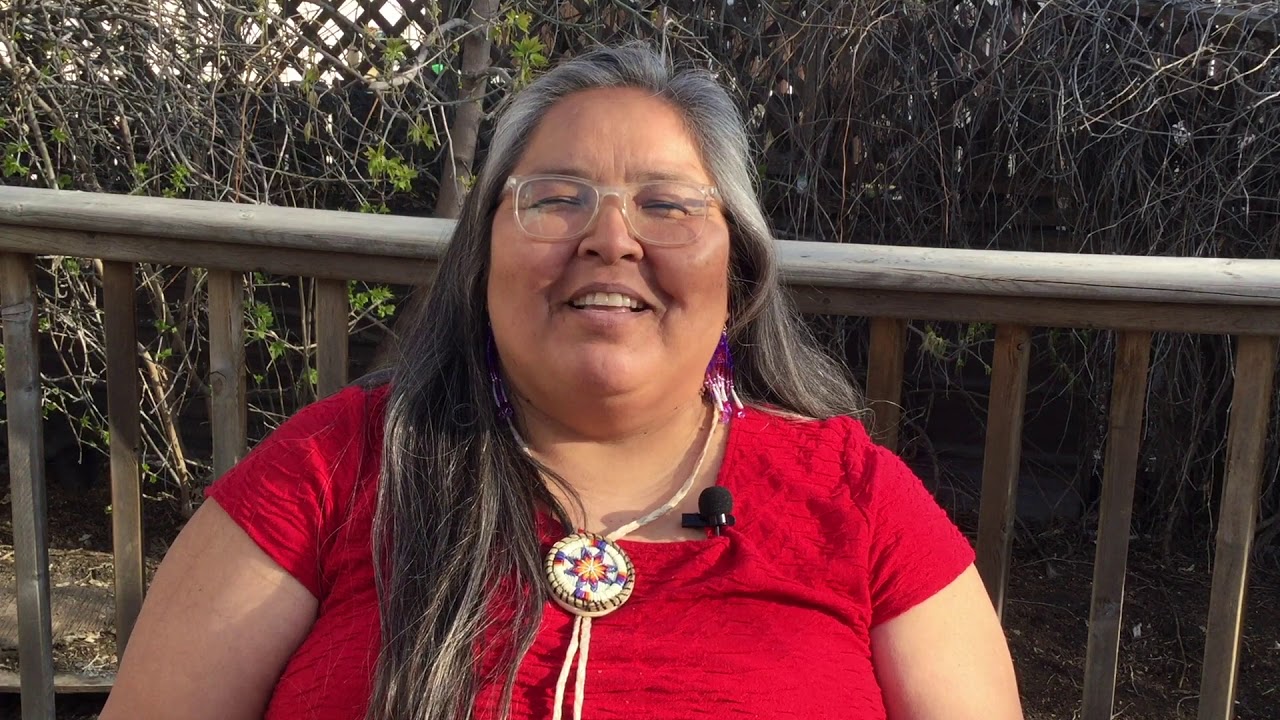
Joely BigEagle-Kequahtooway and Lorne Kequahtooway are artists and leaders behind the Buffalo People Arts Institute (BPAI). Founded in 2015, BPAI became a non-profit organization whose mission is to share traditional Indigenous teachings and knowledge in order to raise social consciousness and create awareness of the power and strength drawn from blood memory and our connection to the buffalo.
In collaboration with NCCIE and Common Weal, BPAI documents the process of and teachings about buffalo hide tanning. This series of stories entitled, Buffalo Hide Tanning and Teachings, takes you on a journey of exploring connection to the buffalo while also reflecting on the social and historical realities of the buffalo and the people who rely on its survival.
Posted on by Steffany Salloum
In Part 2 of the series, Lorne shares his knowledge about and models making a buffalo bone scraping tool used on buffalo hides.
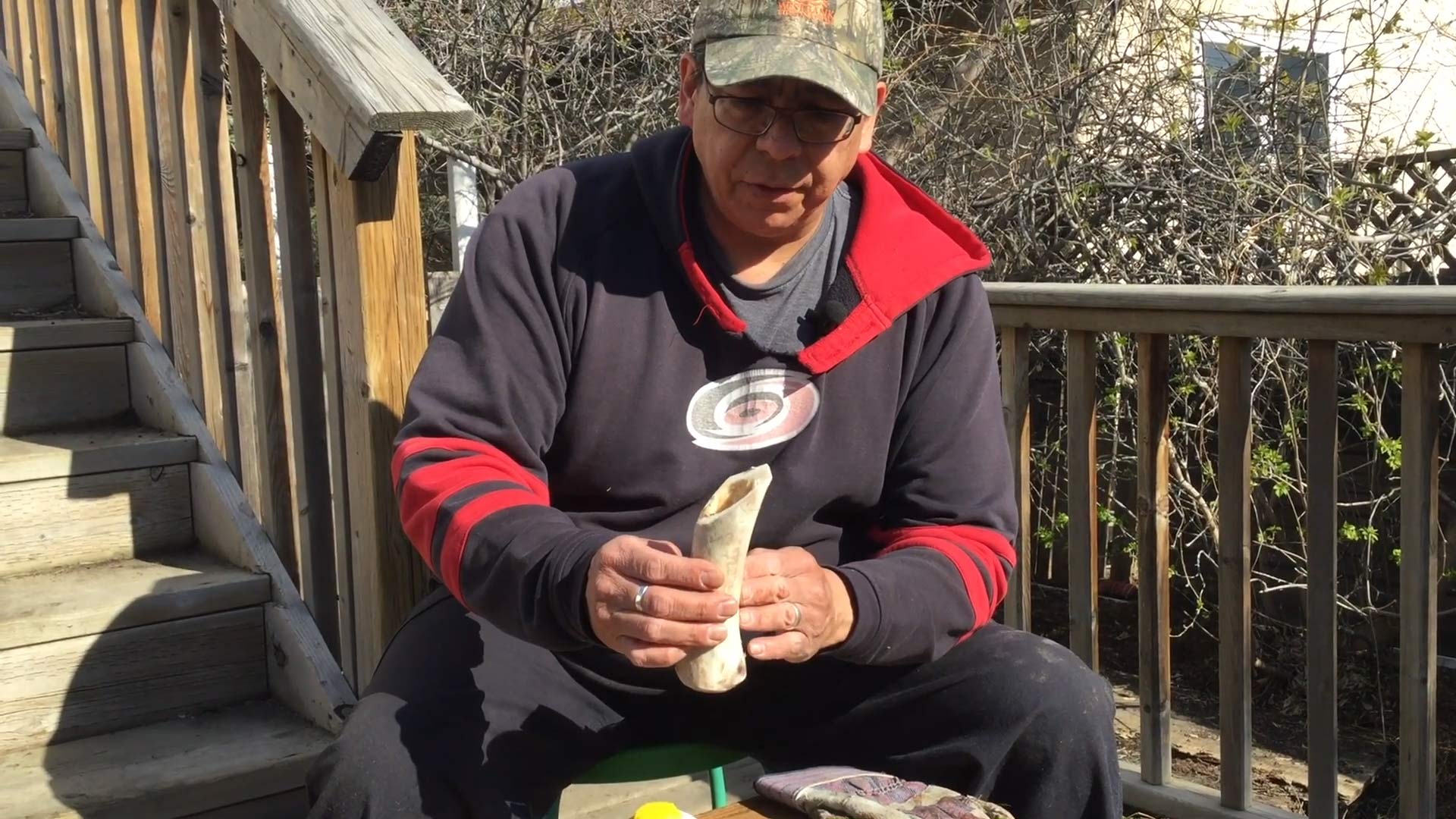
Lorne Kequahtooway walks the audience through a demonstration of traditional tool making while discussing the history of the tools. The first steps in making a buffalo or moose bone scraping tool is to boil the bones and remove any meat or fat left on the bone. Once the bone dries there may be hair or skin on the bone that needs to be removed. Then, the edge of the bone needs to be cut at a 60 degree angle with grooves cut into the angled edge creating a serrated edge. The serrated edge is filed and sharpened which allows for a more efficient hide scraping. The last step of this process involves drilling a hole through the bone to install a leather loop handle.
Joely BigEagle-Kequahtooway and Lorne Kequahtooway are artists and leaders behind the Buffalo People Arts Institute (BPAI). Founded in 2015, BPAI became a non-profit organization whose mission is to share traditional Indigenous teachings and knowledge in order to raise social consciousness and create awareness of the power and strength drawn from blood memory and our connection to the buffalo.
In collaboration with NCCIE and Common Weal, BPAI documents the process of and teachings about buffalo hide tanning. This series of stories entitled, Buffalo Hide Tanning and Teachings, takes you on a journey of exploring connection to the buffalo while also reflecting on the social and historical realities of the buffalo and the people who rely on its survival.
Posted on by Steffany Salloum
In Part 3 of the series, the Buffalo People Arts Institute prepare the buffalo hide for scraping.
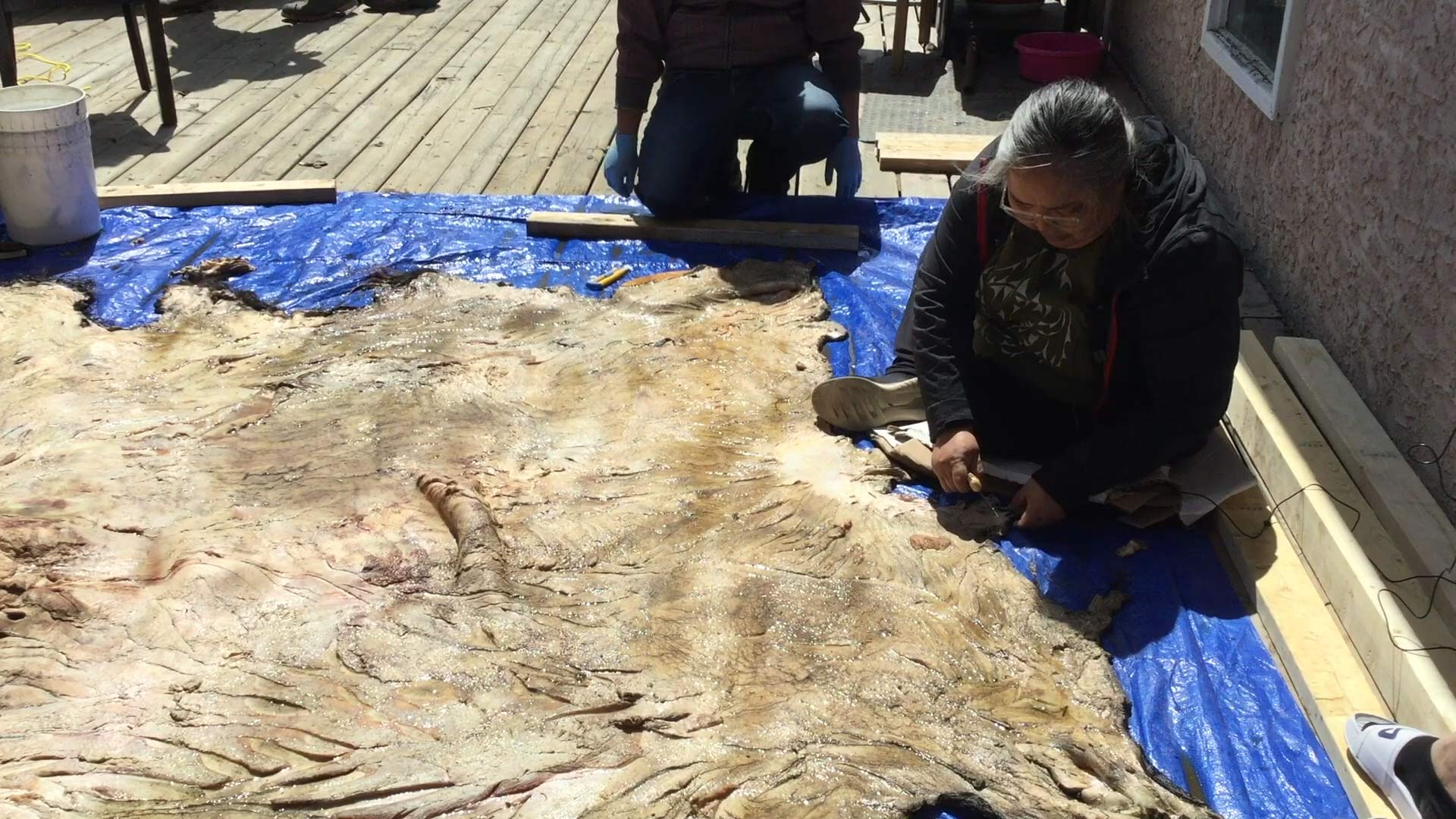
A lot of work goes into preparing the buffalo hide for scraping. First, you start by spreading out the hide and washing it, keeping it wet so it doesn’t dry out and harden. Before working on the hide it is important to smudge and pray for the hide, to work with it in a good way. It is important to remain open to the teachings of the hide and reflect while you are working on it. Then, in order to string up the hide it needs many holes cut into the edges of the hide. In order to make the holes it is important to cut the fat off from around the edges before it is strung up, otherwise it becomes too difficult scraping around the rope and holes. After the crew is done scraping around the edge and the holes are made, they can begin to make the 10×10 frame with which the hide will be tied to and strung up so that they can begin scraping.
Joely BigEagle-Kequahtooway and Lorne Kequahtooway are artists and leaders behind the Buffalo People Arts Institute (BPAI). Founded in 2015, BPAI became a non-profit organization whose mission is to share traditional Indigenous teachings and knowledge in order to raise social consciousness and create awareness of the power and strength drawn from blood memory and our connection to the buffalo.
In collaboration with NCCIE and Common Weal, BPAI documents the process of and teachings about buffalo hide tanning. This series of stories entitled, Buffalo Hide Tanning and Teachings, takes you on a journey of exploring connection to the buffalo while also reflecting on the social and historical realities of the buffalo and the people who rely on its survival.
